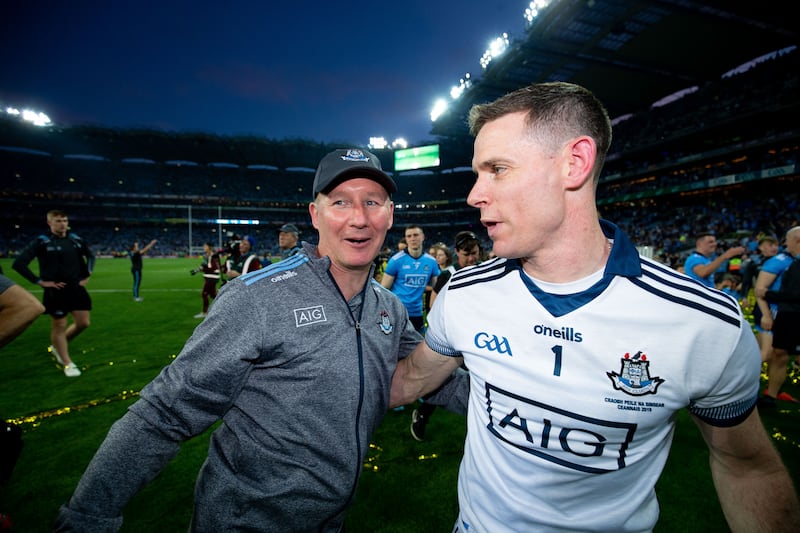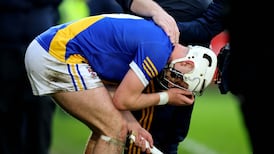The onset of the GAA’s hiring season moved into a higher gear this week with the appointment of Jim McGuinness in Donegal. Although there had been a few others announced, this was the highest-profile county to fill a vacancy.
It’s quiet compared to last year when half of the Division One counties were in need of a new manager. Of last year’s top flight counties, this year Donegal found themselves alone in the market.
McGuinness is an obvious choice and since he was last in charge of Donegal nine years ago, he has obtained a Uefa Pro Licence in soccer and worked with various clubs on three different continents. He has also been providing analysis of Gaelic football matches in both broadcast media and in print with this newspaper.
[ Jim McGuinness appointed Donegal manager for a second termOpens in new window ]
Speaking to The Irish Times, Shane Flanagan, the GAA’s national director of coaching, outlined the traditional and modern importance of the manager: “They were exceptional people, who knew people and they were able to motivate, relate to and connect with players. In a lot of ways, they made up what we now call a sports science interdisciplinary team. They had an understanding of all those areas.
READ MORE
“What happened in the last 25 years is that DCU and the emergence of the third-level sector and the performance element have certainly contributed to overall improvement in the delivery and exposure to players of sports science.
“In a lot of ways, their exposure at third level probably set expectations and led to players saying, ‘we know what good is like here,’ and influencing them on what structures they look for in the counties.”
In this environment, where a player in his mid-20s may have completed a master’s degree on some aspect of football tactics or preparation, he is going to be a tough dressing-room audience for any new manager.
Demands go both ways. When Pat Gilroy was managing Dublin more than 10 years ago he supplied each of the players with a phone and, in the absence of suitable mobile software at the time, got the DCU IT department to write a programme, which would allow players to log in their training details.
Players’ expectations can, however, be unrealistic. A small county with limited resources won’t always be able to provide a manager who, in the elite counties, is effectively the CEO of a high-performance unit.
It’s an aspect of management familiar to Tim Healy, who has had an involvement at nearly all levels within the GAA. Healy has coached in UCD, been a member of the football review committee and has worked on opposition analysis for Cork manager John Cleary.
Three years ago, he completed a PhD on the development of management in English soccer.
“One of the changes is in functional specialisation,” Healy says. “Years ago, managers in England up as far as Alex Ferguson were all-powerful. They mightn’t have taken it to the extremes of Brian Clough, who when starting out at Hartlepool drove the bus and even painted the stand, but they ran everything football related.
“These days Klopp and Guardiola are primarily responsible for the preparation and performance of the first team. They may have some involvement in transfers, but not as much as in the past, and specialist coaches are commonplace – for example, Liverpool brought in a throw-in coach.”
The need to oversee all these micro-functions is becoming a part of the GAA landscape. Healy cites Jim Gavin’s record-breaking management of the Dublin footballers as being the first to embrace this approach.

“He may have had a large management team but they each had a function and a responsibility. It is no coincidence that Dublin were able to perform consistently on the big occasions.”
Healy believes that this “functional specialisation” will spread through the GAA at intercounty level and, to an extent, already has with the growing size of back room teams.
Liam Sheedy, twice an All-Ireland winning manager with the Tipperary hurlers, quipped on his return to the position in 2019 that he now needed two buses for the back room team as opposed to the one he had during his first tour of duty 10 years previously.
Last year at a coaching conference in Ulster, Sheedy again emphasised the importance of managing that multidisciplinary detail. Those speciality functions must, however, be integrated in pursuit of the main goal.
One name that always crops up in any discussion of intercounty management and the coaching interface is Paul Kinnerk in Limerick whose work with John Kiely and his management team has been instrumental in the county’s recent unprecedented success.
“We’re a principles-based approach team in terms of how we try and play,” Kinnerk said in a rare interview, “exposing them to that and exposing them to greater difficulty and increasing the complexity at which they’re working within those areas. Ultimately, it is done through games – pressurised opposed environments.”
That is the modern way. Teams’ training is conducted with tactical plans and technical detail foremost. The same goes for mental preparation and performance coaching. Everything is geared towards what will happen on the pitch.
Eleven years ago, GAA director general Páraic Duffy produced a discussion document on payments to managers and amateur status.
The view within the association tended to be that as players weren’t being paid, they would be outraged were managers to be remunerated. Duffy’s paper floated the option that they should be compensated for their efforts. The option was rejected.
These days, players are more likely to be unimpressed if the manager isn’t deemed capable of providing the best-practice preparation they demand. As can be understood from the above complexities, taking on these duties is extremely challenging.
One intercounty manager in the season just gone had to take unpaid leave from his job as he couldn’t do both.
Not surprising but hardly sustainable, either.















